How to Become a Successful Web Designer?
If you’re new to the world of technology, web design is a great place to learn. But the question is: How do you become a successful web designer?
To become a successful web designer, you need the technical skills to build functional websites, artistic ability, and design sensibility to create a great user experience.
If you’re creative and technical, web design is for you. Here are five steps to becoming a successful web designer.
Become a successful web designer in five steps:
- Learn the theoretical principles of web design.
- Get to know the key web design tools.
- Work on your projects to improve your web design skills.
- Submit your portfolio to showcase your web design skills.
- Apply for jobs related to web design.
Step 1: Learn the Theory of Web Design
The first step to becoming a web designer is to learn the web design theory. Some theoretical principles, such as user experience, structure, and color theory, go into creating great websites.

There are several ways to learn the theory of web design. One popular way is to attend a web design course or coding bootcamp (or a UX design bootcamp or web development bootcamp). Web design boot camps are short, intensive, and comprehensive training programs that can introduce newbies to design technology. Participating in these courses will turn you into a job-ready web designer in about 12 weeks of training (most boot camps also have part-time courses, but they take longer to complete.)
There are also many interesting tutorials on YouTube about the theory of web design. To ensure that learning web design is right for you before taking a longer course, you can sign up for free classes on platforms like Coursera, Sololearn, or DesignContest.
Learning the theoretical principles of web design differs from other forms of theoretical learning. This is because the field of web design is constantly changing. A Successful web designer is committed to continuous learning and improving their skills.
Step 2: Know the key web design tools
Before starting as a web designer, you must learn web design tools. Over time, better and more powerful web design software and tools have been developed and released. As a result, web designers are always in a better position to design beautiful and functional websites.
If you want to become a successful web designer, we recommend that you familiarize yourself with the following tools:
WordPress
WordPress currently powers 27% of all websites on the Internet and 76% of the worldwide CMS (Content Management System) market share. WordPress has over 1,000 built-in themes and plugins that allow you to easily build, edit, customize, improve, and optimize your site.
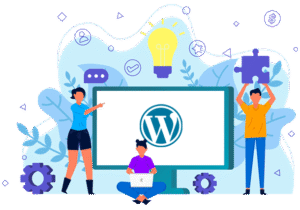
InVision Studio
Although WordPress is still the most popular content management tool overall, many web designers consider InVision the best tool for designing a website due to its feature set and rapid prototyping. With InVision, you can create custom transitions and animations with gestures like clicking, swiping, and hovering.
Photoshop
Web designers need to create eye-catching and creative images. That’s why Photoshop is one of the most essential members of Adobe’s software suite for web designers. With a vast array of color and gradient options, this software gives you everything you need to assemble stunning designs.
Dreamweaver
Dreamweaver is another piece of Adobe’s suite that web designers should be familiar with. Even if you’re not a coding pro, you can still code your website design directly with this tool. This tool’s ready-made design templates and other features are handy for beginners looking for attractive and responsive designs.
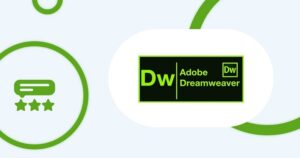
Sketch
Commonly used for user interface design, Sketch is an essential tool for creating interfaces and prototyping. When you’re working with vector and graphic designs, Sketch can make your job a lot easier.
Google Web Designer
This tool gives you the power to create attractive and stunning HTML5 content. With Google Web Designer, you can use animation and interactive elements. It also integrates seamlessly with other Google products, including Google Ads and Google Drive, to bring your creative vision to life.
Step 3: Work on your projects to hone your web design skills
Now that your web design toolbox is ready, you can design websites. You’ll likely pick up many skills during your training. Some will be technical or “hard” skills, like HTML, CSS, or JavaScript programming. The best way to hone these skills is just to get started. The more sites you build, the better you’ll get.
Web designers also need a number of user experience design skills. They program the pages that users interact with. Understanding user-centered and responsive design can help you be more successful.

While designing websites, please consider how users interact with them, pain points, or navigation issues. How can you improve the site? In this situation, you will come to the mindset of user experience (UX) design, which is essential for designing web products.
Step 4: Provide your portfolio to show off your web design skills
Having a great portfolio that showcases your talent for web design is your best tool when applying for a job as a web designer.
Consider a diverse and concise portfolio of projects. Include only beautiful, professional, and standard designs and those you love. However, you should show that you have designed various sites with varying levels of beauty. When chatting or interviewing with an employer, customize your portfolio to showcase work that matches the mood of the company or employer.
You need to know what makes you a special web designer to have a good portfolio. Choose a job that highlights your strengths. Also, consider how you present your portfolio. Remember that a design project’s UI and UX must be executed flawlessly.
Ultimately, employers want to see how you create and design these beautiful websites. Many web designers like to see you use text and written explanations to show your thought process and the problem you’re trying to solve. Plus, by doing so, you’re showing off your communication skills, which are excellent soft skills for a web designer.
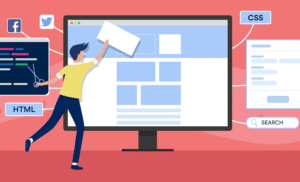
Step 5: Apply for Web Design Jobs
There are many jobs in the web design field. Someone with web design skills and the right combination of education and experience will eventually qualify for any of the following jobs:
- Web Designer
- Front-end Developer
- Front-end Designer
- UX/UI Designer
- Product Manager
- Visual Designer
- Interaction Designer
- Mobile Developer
If you’re new to a boot camp or other training program, you’ll likely be looking for entry-level jobs in these fields. However, if you have prior experience in the field (even if it’s not in web design), you’ll still be eligible for higher-paying positions.
You can also upload your resume and portfolio to job and freelance sites to get hired. Most offer career services like interview preparation and resume writing assistance if you decide to take a course.
Soft Skills to Become a Successful Web Designer
Now that you’ve mastered the hard skills, you must acquire the soft skills to succeed in web design. Most successful web designers consider these skills essential. So save yourself time by teaching them.
Time Management
Whether you’re interested in learning web design for freelance work or full-time employment at a company, you must plan your projects and manage your time properly to become a successful web designer. This means familiarizing yourself with applications like project management software and work calendars. If you work for a large organization, you’ll deal with project-tracking tools like Trello or JIRA. With any tool, you can plan your work for success (and mental health!) in the busy world of web design.

Communication Skills
Communicating and getting your point across to others is another essential skill for a successful web designer. You can’t make a living building websites without excellent communication. You need to keep clients informed about the progress of their projects and pitch ideas, as well as explain your creations. You may be asked to do copywriting or editing for websites, especially e-commerce sites. So, pay attention to your written and verbal skills and share your goals with your clients and colleagues.
SEO, Digital Marketing, and Social Media
Skills in SEO (search engine optimization), digital marketing, and social media may be more suited to a marketer or salesperson. However, since many companies today conduct their sales online, web designers should also be familiar with these skills. Knowing and applying the basics to your clients and your own sites will put you on the path to web design success.
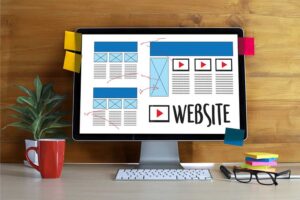
Business Management and Client Relations
As an employee or freelancer, this ultimate skill will help you ensure the profitability and sustainability of your business and company. You don’t need an MBA, but you should have an idea of your employer’s or business’s financial goals and objectives so you can use them to guide your work. If you work directly for clients, you should have a plan to ensure cash flow and project success in the short and long term.
Types of Web Designer Jobs
There are three types of web design jobs with three very different work arrangements: freelance, corporate, and full-time web designers.
Freelance or Remote Web Designer
Freelance web designers are essentially self-employed. This means they must balance managing and marketing their business while taking on new work.
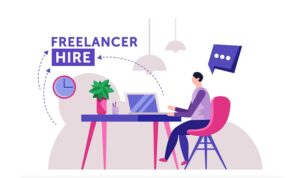
Therefore, you must consider whether the freedom to choose your projects is worth the time and effort required to start a business and find clients.
Corporate Web Designer
Working for a web design firm gives you a sense of security and certainty about your salary, but in return, you have to give up most or all of your control over your clients and freelance projects.
Additionally, these web design firms may specialize in specific industries or niches you are not particularly interested in.
Full-time Web Designer
Full-time designers typically work on one or more websites for a company. They may also be responsible for a specific feature or section of a larger website. For example, someone might work exclusively on a company’s mobile products.
Full-time designers are not as concerned with customer satisfaction, although the site under their care will have many stakeholders. On the downside, they lack the same variety of work as other designers.
How can I become a freelance web designer?
To become a freelance web designer, you must acquire the necessary skills, build a portfolio, and build your client base.
Being a freelance designer has many benefits, including creative control, flexible scheduling, and unlimited pay. Of course, working as a freelancer requires discipline, dedication, and hard work. But with the proper training, you can quickly become a professional freelance web designer.
Many web designers have formal education in the field, including a college degree or diploma in fine arts or graphic design or private training courses. Typically, this education includes design theory, website design, responsive design, user research, and the technical side of web design, including programs, tools, and other skills.
Some designers first work for a design firm or agency to build their portfolio and network of contacts before freelancing. If you have a few years, find your clients, develop your skills, and eventually save money to launch your business.

It’s never too late to start a business plan. Freelancers should create their company websites that are responsive, beautiful, professional, and error-free. Consider designing a website to serve marketing purposes and connect with existing clients. Consider including your resume and portfolio there.
If you’re starting, be aware that many web designers offer their services for free to volunteer or charitable groups. During this time, it’s unlikely that your first freelance projects will generate much income. Build up a few years of experience to earn a higher income.
Is there a good demand for web designers?
The demand for talented web designers is skyrocketing in every industry.
As a result, there is no shortage of jobs for skilled web designers. According to the BLS, employment of web developers is projected to grow by 13 percent from 2018 to 2028, much faster than the 5 percent average for other occupations.
Web designers who can code (with some supporting knowledge) are in a class of their own. A web designer who can navigate programming languages like HTML, CSS, JavaScript, SQL, and Python will stand out and command a much higher salary. That’s why many working web designers take web development courses to hone their skills.

UX (user experience) skills are also invaluable to a web designer. Mastering UX design principles, design research and strategy, responsive design, user research, user interface design, and visualizations will make you a valuable web designer for any company.
How to Become a Successful Web Designer Without Experience?
First, you can become a web designer without prior work experience. A Digital Skills survey found that only 54% of web designers started their careers in design. So, while experience or education in a design-related field is a great stepping stone to becoming a web designer, it’s not essential.
Some web designers come from entirely different businesses or fields. Some find their passion in the industry through a hobby or side business, such as running a WordPress site.
Many skills can be learned to help you as a web designer. For example, empathy is crucial. This means you need to understand how the users of your product or service think and act in a given situation. Collaboration skills are also key in many roles, especially for web designers. The job requires interacting with different teams, actively listening, accepting feedback, brainstorming, and more. All businesses need an upbeat personality willing to work in a team environment.
Resources
brainstation.io/career-guides/how-to-become-a-web-designer